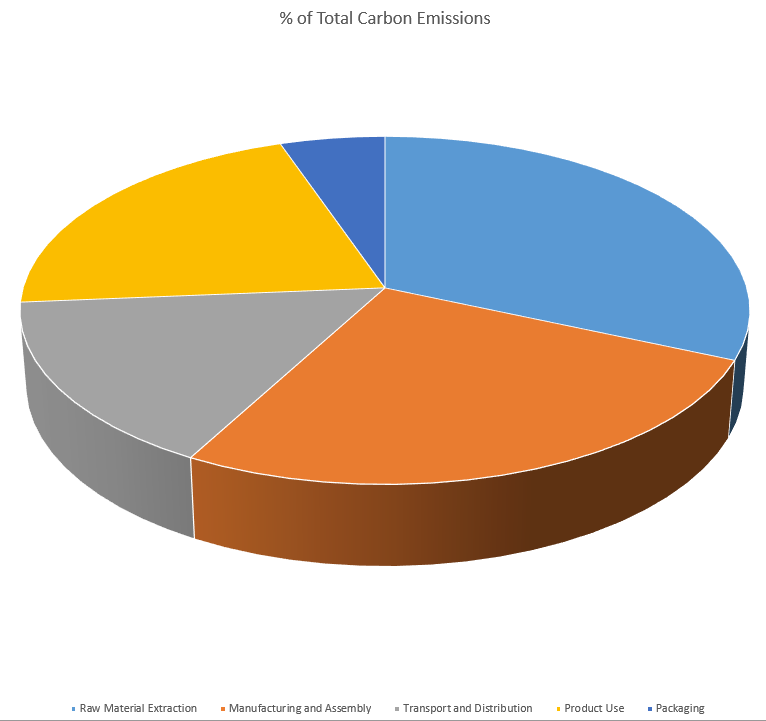How to Determine the Carbon Footprint of a Product
Determining the carbon footprint of a product is a crucial step in evaluating its environmental impact. A product carbon footprint (PCF) measures all greenhouse gas (GHG) emissions generated throughout a product’s life cycle, from the extraction of raw materials to disposal. But how exactly do you calculate the carbon footprint of a product? Let’s dive into the step-by-step process of measuring it effectively.

What is a Product Carbon Footprint?
A product carbon footprint (PCF) refers to the total greenhouse gases (GHGs), like carbon dioxide (CO₂), produced directly or indirectly during a product’s life cycle. This includes every stage, from raw material extraction, manufacturing, transportation, use, and final disposal. By understanding how to determine the carbon footprint of a product, companies can pinpoint their environmental impact and implement strategies to reduce it.
How to Determine the Carbon Footprint of a Product: Step-by-Step Guide
Step 1: Define the Goal and Scope
Before beginning the process of calculating the product’s carbon footprint, it is crucial to set clear objectives. Are you comparing products for sustainability purposes or reporting emissions to customers? The goal defines the depth of analysis required.
Step 2: Set the System Boundary
When determining the product’s carbon footprint, you must establish the boundaries:
- Cradle-to-grave includes all stages from raw material extraction to product disposal.
- Cradle-to-gate stops at the factory gate, excluding emissions from distribution and product use.
If you’re unsure whether to include downstream emissions, consider which phases contribute most to the overall footprint.
Step 3: Data Collection
To calculate the carbon footprint, gather data on the production process, materials, and energy consumption. The quality of this data will affect the accuracy of the final measurement. You can use two types of data:
- Primary data: This refers to actual, specific information about the product, such as energy consumed during manufacturing.
- Secondary data: These are generic emissions factors that are often used when primary data is unavailable.
For example, when calculating emissions for a car, you would gather data on the materials, such as steel and aluminum, as well as emissions from manufacturing and transporting the vehicle.
Step 4: Emissions Calculation
Once the data is collected, use the formula:
Product carbon footprint = Activity data × Emission factor.
To gain a deeper understanding of how to calculate your personal and product-related footprints, check out our article on Carbon Footprint Calculation: Everything You Need to Know to Measure Your Environmental Impact.
For every activity involved in the production, you multiply the amount of resources used by the emission factor (the rate at which it generates GHGs). After performing this calculation for each process, sum the results to get the total product emissions.

Explanation of the Data:
- Raw Material Extraction (30%): Emissions from extracting and processing materials like metals, plastics, and fuels.
- Manufacturing and Assembly (25%): Emissions from the energy consumed during production and the assembly of product components.
- Transport and Distribution (15%): Emissions generated during the transportation of materials and finished products to distribution points.
- Product Use (20%): Emissions produced during the usage phase, such as fuel burned in vehicles or electricity consumed by electronics.
- Packaging (5%): Emissions related to packaging materials like plastic or cardboard, including their production and disposal.
- End-of-life Disposal and Recycling (5%): Emissions from disposing of or recycling the product once it has reached the end of its life cycle.
Hotspots and Reducing Emissions
During the calculation, identify carbon hotspots—areas of the product’s life cycle that generate the most emissions. By focusing on these hotspots, businesses can develop strategies for emissions reduction. For example, switching to renewable energy during the manufacturing process can significantly lower emissions.
Learn more about calculating your personal carbon footprint here.
Using Product Carbon Footprint Data
Once calculated, PCFs can be used to communicate the environmental impact of products to customers or investors. Reducing a product’s carbon footprint also enhances its competitiveness in a market increasingly driven by sustainability.
What is a product carbon footprint?
A product carbon footprint is the total greenhouse gas emissions generated throughout the life cycle of a product, from raw materials to disposal.
How can I calculate the carbon footprint of a product?
You can calculate the carbon footprint by gathering data on materials, energy consumption, and emissions, then using the formula: Activity data × Emission factor.
Why is it important to calculate the carbon footprint of a product?
Calculating the product’s carbon footprint helps identify emission hotspots, allowing businesses to reduce their environmental impact and meet sustainability goals.
What are cradle-to-gate and cradle-to-grave assessments?
Cradle-to-gate assessments consider emissions up to the point of manufacturing, while cradle-to-grave includes the entire life cycle, from raw material extraction to disposal.



